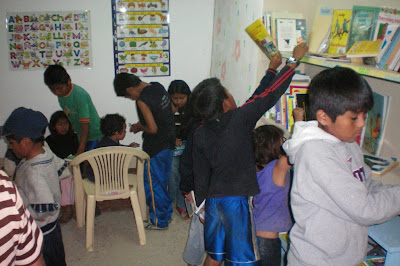High school students: Would you be attracted here for college? Every student works 4 hours a week to improve the school. If he or she has a scholarship of any sort - 8 hours a week.


But you never know what your assignment will be on a given day. Maybe demolishing an adobe building,
Could be joining Johnnie to feed the hogs.
The second year nursing students are clearing the drainage ditches in the rain.


Which merits a little hot tea.

Gracia processes pork products.

....and there is always grass to be cut. This is not the only way to cut grass here, of course. The horses, the mule and goats assist.

Luis Angel volunteered to paint the bell tower roof - wearing his leather "Chacarero" hat with the turned-up brim.

And so over the 15 years since Sr. Damon founded the college, much of the building and maintaince has been done by students.

Luis Angel volunteered to paint the bell tower roof - wearing his leather "Chacarero" hat with the turned-up brim.

And so over the 15 years since Sr. Damon founded the college, much of the building and maintaince has been done by students.





 Jose
Jose 










+speaks+truth+to+power.jpg)







 ....and dancing.
....and dancing.


















 One of the University students in the art room
One of the University students in the art room